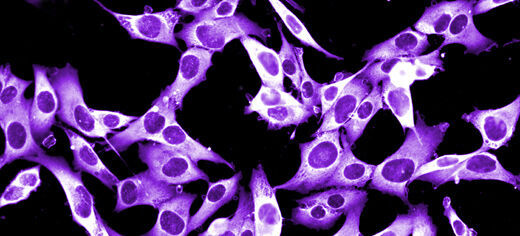
Buffers that guard against damage to the ends of chromosomes could hold the key to a better understanding of malignant melanoma, according to new research from the University of Leeds.
The study has uncovered an important new genetic risk factor for melanoma.
It is well known that pigmentation and mole count are the strongest indicators of those most at risk of developing melanoma. For example, paler people should take more care in the sun, as they burn more easily.
It now appears that another risk factor is the length of telomeres, regions at the end of every chromosome that buffer and protect against DNA deterioration and damage when cells are replicated.
Dr Mark Iles, of the School of Medicine at the University of Leeds, who led the research team, said: “Telomeres have been described as being like the plastic tips on shoelaces that protect the shoelace from fraying, just as telomeres protect chromosomes from degrading or fusing to one another.
“For the first time, we have established that the genes controlling the length of these telomeres play a part in the risk of developing melanoma.”
He continued: “More research is needed to better understand the relationship between melanoma and telomeres, but learning more about how an individual's genetic telomere profile influences their risk developing melanoma may help us. It will improve our understanding of melanoma biology and gives us a target towards developing potential treatments as well as potentially helping shape advice on what behavioural changes people might make.”
The research team created a score representing genetically-determined telomere length, based on all the established telomere associated genes and found that this score was associated with melanoma risk. The one in four people predicted to have the longest telomeres are at 30% increased risk of developing melanoma compared to those one in four predicted to have the shortest telomeres.
Dr Kat Arney, science information manager at Cancer Research UK, which funded the research, said: “This kind of research is vital if we're to understand how people's genetic makeup influences their risk of developing cancer. There's a lot we still don't understand about how telomere length is linked to cancer risk, but this new study is a step forward in unravelling the secrets of these unusual DNA structures.”
Malignant melanoma is the fifth most common cancer in the UK with around 12,800 new cases and around 2,200 deaths each year.
The research has been published in the Journal of the National Cancer Institute.
Further information
Dr Mark Iles is available for interview. Contact Ben Jones in the University of Leeds press office on +44 (0)113 343 8059 or email B.P.Jones@leeds.ac.uk
A copy of the research paper, “The effect on melanoma risk of genes previously associated with telomere length”, by Iles et al, is available from the Press Office.